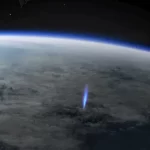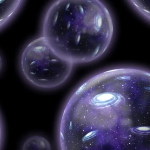Key Takeaways:
- The origin of the universe’s gold abundance remains a mystery, leaving scientists puzzled.
- Gold is formed through intense nuclear fusion, requiring specific conditions not common in the universe.
- Neutron star collisions were once considered a source, but their rarity makes them insufficient to explain gold’s abundance.
- Magneto-rotational supernovas, a rare star explosion type, also fall short in accounting for the vast amount of gold.
- A comprehensive study delving into the universe’s chemical evolution has revealed that existing models can’t explain the origin of gold.
In a captivating cosmic puzzle, the universe appears to have a relentless infatuation with gold, yet the source of this cherished metal continues to elude scientists. Gold, an element renowned for its beauty and rarity on Earth, demands an extraordinary process for its creation, involving the fusion of 79 protons and 118 neutrons into a single atomic nucleus. This intense nuclear fusion is not a commonplace occurrence in the cosmos, raising questions about how the universe has amassed such a treasure trove of gold, both on Earth and throughout the solar system.
A recent study has taken a deep dive into the origins of gold, dispelling the most commonly-theorized explanation: collisions between neutron stars. Surprisingly, even these high-energy events, where protons and neutrons momentarily collide and produce heavy atomic nuclei, fail to account for the universe’s wealth of gold. Astrophysicist Chiaki Kobayashi, the lead author of the study from the University of Hertfordshire in the United Kingdom, highlights that conventional supernovas can’t explain gold’s abundance either, as massive stars capable of fusing gold before their explosive deaths typically become black holes, effectively swallowing any gold they produce.
Enter the “magneto-rotational supernova,” an exceptionally rare type of stellar explosion characterized by its rapid spinning and powerful magnetic fields. During this extraordinary event, a dying star undergoes such extreme forces that it essentially turns itself inside out while ejecting scorching jets of matter into space. Due to this unique transformation, these jets become laden with gold nuclei. Yet, the stars that not only fuse gold but also disperse it into space through magneto-rotational supernovas are exceptionally scarce.
However, even when considering neutron star collisions alongside magneto-rotational supernovas, the vast reservoirs of gold found on Earth remain inadequately explained. This perplexing problem unfolds in two stages: firstly, neutron star mergers alone fail to account for the observed gold levels, and secondly, even when adding magneto-rotational supernovas as a second source, there is still a considerable gap in explaining the abundance of gold.
Prior studies hinted at neutron star collisions releasing significant amounts of gold, but these studies did not fully consider the rarity of such events. Estimating the frequency of tiny neutron stars, which are the dense remnants of ancient supernovas, colliding remains challenging. Observations have been limited to just one occurrence, and even rough estimates indicate that these collisions are not frequent enough to generate all the gold present in the solar system.
Astrophysicist Ian Roederer from the University of Michigan, who specializes in tracking rare elements in distant stars, notes that previous research has also questioned the sufficiency of neutron star collisions in explaining the abundance of gold. However, the recent study led by Kobayashi and her team, published in The Astrophysical Journal, stands out for its remarkable depth. The researchers meticulously examined a vast body of data and employed robust models to depict the galaxy’s evolution and the formation of new chemical elements.
One distinguishing feature of this study is the extensive references it includes, citing 341 other publications, a notably high number even for a scientific paper in The Astrophysical Journal. This comprehensive approach involved Herculean efforts to synthesize and interpret a wealth of data.
Through their meticulous analysis, the researchers managed to elucidate the formation of atoms spanning an impressive range, from the light carbon-12 (composed of six protons and six neutrons) to the heavy uranium-238 (comprising 92 protons and 146 neutrons). Notably, this encompassed elements often overlooked in similar studies.
While their calculations aligned well with observations for some elements, including strontium and europium, the mystery of gold’s origin persisted. This conundrum hints at the presence of unknown processes in the universe responsible for generating gold. Alternatively, neutron star collisions might be producing far more gold than current models suggest. Regardless of the solution, astrophysicists are left with a captivating enigma to unravel: the source of the universe’s fascination with the precious metal, gold.


